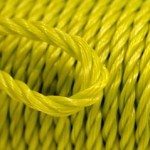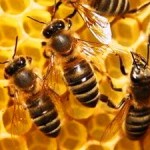
Abstract
The leather processing industries are one of the most polluting industrial sectors, as they produce large amounts of organic and chemical pollutants. Gasification technology has the potential to provide significant cost benefits in terms of power generation and tannery waste disposal, and increase sustainability within the leather industry. Anaerobic Digestion transforms the organic matter contained in the sludge and tannery solid wastes into biogas. Apart from solving environmental problems, the energy generated by anaerobic digestion or gasification of tannery wastes can be put to beneficial use, in both drying the wastes and as an energy source for the tannery’s own requirements, CHP or electricity export from the site.
Introduction
The conventional leather tanning technology is highly polluting as it produces large amounts of organic and chemical pollutants. Wastes generated by the leather processing industries pose a major challenge to the environment. According to conservative estimates, about 600,000 tons per year of solid wastes are generated worldwide by leather industry and approximately 40–50% of the hides are lost to shavings and trimmings. Everyday a huge quantity of solid waste, including trimmings of finished leather, shaving dusts, hair, fleshing, trimming of raw hides and skins, are being produced from the industries. Chromium, sulphur, oils and noxious gas (methane, ammonia, and hydrogen sulphide) are the elements of liquid, gas and solid waste of tannery industries.
Tannery effluents are characterized by high contents of dissolved, suspended organic and inorganic solids giving rise to high oxygen demand and potentially toxic metal salts and chromium metal ion. The tannery effluent, if not treated properly, can cause serious damage to soil and water bodies. The high amount of salt contained in the effluent, for example, can increase soil salinity, reduce fertility and damage farming in large areas. Tanneries also produce harmful gases, dust and a large amount of solid waste. The graveness of the problem can be understood by the fact that these toxic effluents are being discharged into natural water courses without or with minimal treatment in several parts of the world.
Waste Generation in the Tanning Industry
“Tanning” refers to the process by which collagen fibers in a hide react with a chemical agent (tannin, alum or other chemicals). However, the term leather tanning also commonly refers to the entire leather-making process. Hides and skins have the ability to absorb tannic acid and other chemical substances that prevent them from decaying, make them resistant to wetting, and keep them supple and durable. The flesh side of the hide or skin is much thicker and softer. The three types of hides and skins most often used in leather manufacture are from cattle, sheep, and pigs.

A large amount of waste produced by these tanneries is discharged in natural water bodies directly or indirectly through two open drains without any treatment. The water in the low lying areas in developing countries, like India and Bangladesh, is polluted to such a degree that it has become unsuitable for public use. In summer, when the rate of decomposition of the waste is higher, serious air pollution is caused in residential areas in vicinity of tanneries by emission of intolerable obnoxious odours.
Solids
Solids originate from all stages of leather making; they comprise fine leather particles, residues from various chemical discharges and reagents from different waste liquors. These comprise of large pieces of leather cuttings, trimmings and gross shavings, fleshing residues, solid hair debris and remnants of paper bags.
Out of 1000 kg of raw hide, nearly 850 kg is generated as solid wastes in leather processing. Only 150 kg of the raw material is converted into leather. Tannery generated huge amount of solid wastes is as follows:
- Fleshing: 56-60%
- Chrome shavings, chrome splits and buffing dust: 35-40%
- Skin trimming: 5-7%
- Hair: 2-5%
Waste Water
Over 80 per cent of the organic pollution load in BOD terms emanates from the beam-house (pre-tanning); much of this comes from degraded hide/skin and hair matter. During the tanning process, at least 300 kg of chemicals (lime, salt, etc.) are added per ton of hides. Excess of non-used salts will appear in the waste-water. Because of the changing pH, these compounds can precipitate and contribute to the amount of solid waste or suspended solids. Every tanning process step, with the exception of finishing operations, produces waste-water. An average of 35 m3 is produced per ton of raw hide. The waste-water is made up of high concentration of salts, chromium, ammonia, dye and solvent chemicals, etc.
Gasification of Tannery Wastes
The implementation of gasification has the potential to provide significant cost benefits in terms of power generation and waste disposal, and increase sustainability within the leather industry. The gasification process converts any carbon-containing material into a combustible gas comprised primarily of carbon monoxide, hydrogen and methane, which can be used as a fuel to generate electricity and heat.
A wide range of tannery wastes can be macerated, flash dried, densified and gasified to generate a clean Syngas (Synthetic Gas) for reuse in boilers or other Combined Heat & Power systems. As a result, up to 70% of the intrinsic energy value of the waste can be recovered as syngas, with up to 60% of this being surplus to process drying requirements, so can be recovered for on-site boiler or thermal energy recovery uses.













